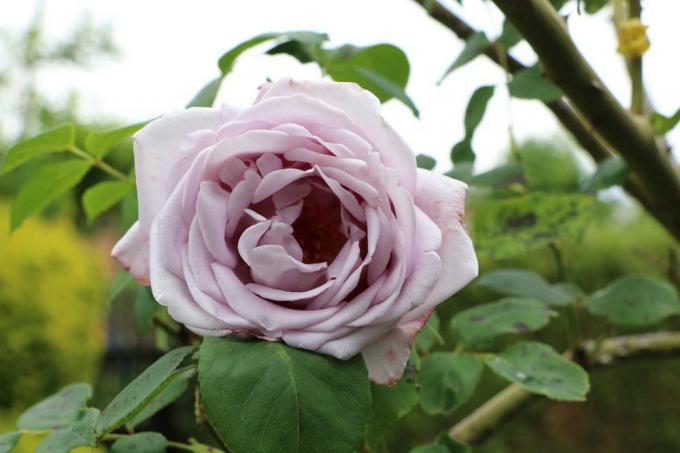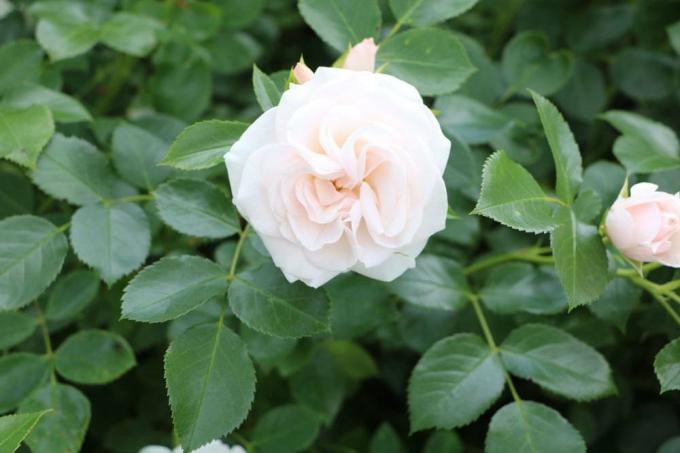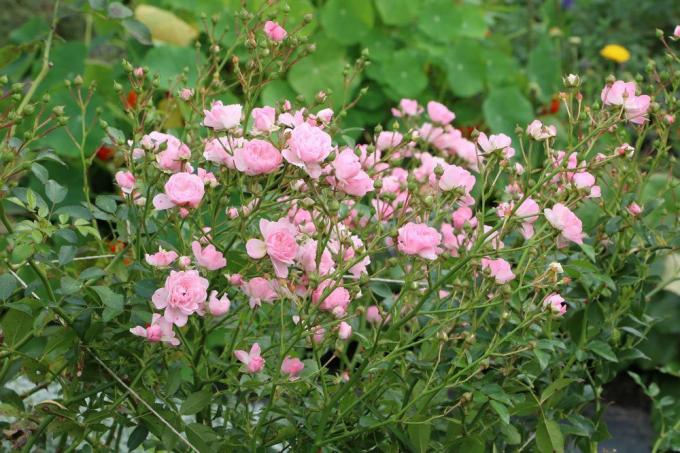
table of contents
- Wild shoots on roses
- Recognize wild shoots
- Properly remove wild shoots
- Avoid new shoots
Roses grow in a variety of flower colors in many gardens. In white, red, pink, orange or apricot they are an eye-catcher in every garden. The more than 200 types of roses in the rose family (lat. "Rosaceae") cannot be surpassed in their bloom. However, so that the beautiful sight of your roses is preserved for a long time, wild shoots must be removed regularly. Here's a guide on how to spot and remove the wild shoots of your roses.
Wild shoots on roses
What are wild shoots?
Most of the roses that can be found in our gardens are grafted roses. The refined roses are composed of two different plants: the hybrid tea and the wild rose. The wild part serves as a root for the plant and forms a robust base for the beautiful flowers of the noble variety. The refinement combines the beautiful blossoms of the hybrid tea with the very strong roots of the robust, but not very beautiful wild rose in one plant.

After a while - this can take up to several years - it can happen that the wild rootstock suddenly forms shoots. These shoots are not noticeable at first or you will enjoy the two-tone rose plant. However, these so-called wild shoots have a negative effect on the growth of the hybrid tea rose.
- Wild shoots rob the hybrid tea rose of nutrients, light and water
- Shoots of the wild variety overgrow the hybrid tea
The stronger the wild shoots, the more the hybrid tea is displaced. The beautiful blossoms of the hybrid tea are less and the simple blossoms of the wild rose multiply. If you do not remove the shoots, the colorful blooming flowers of the noble variety can die out. If your rose plant is to remain an eye-catcher in your garden for a long time, it is important to regularly check for wild shoots and then remove them.
Recognize wild shoots
The widespread claim that wild shoots can be easily identified by the number of leaves is out of date. According to this statement, wild shoots have seven leaves. The shoots of the noble variety, on the other hand, have only five leaves. With the many rose varieties, there are now also varieties with more than five leaves on the shoots of the noble variety.
The shoots of the wild base are easily recognizable by their different appearance and their different drive character. If you can see shoots without flowers on your rose plant, it is possible that these are shoots from the wild rootstock. In the first year, the wild shoots usually do not produce flowers. These only sprout in the second year or later. The following features help you to distinguish the appearance of the shoots of the wild variety from the noble variety:
- thinner shoots
- lighter leaves
- grow faster and stronger
- other direction of growth of the shoots, leaves & spines
- simple and simple flowers in white-pink or pink
tip: If you are not sure whether it is a game shoot, you can see whether the shoot has its origin above or below the refinement point. The refinement point is a more or less pronounced thickening on the root neck. To do this, you must first clear the soil around the root area of the rose plant. If the origin is below the refinement point, it is a game shoot. The shoot of the noble variety, on the other hand, always arises above this thickening.
Properly remove wild shoots
There are optimal times for most plant pruning. When is the best time to remove the wild shoots? Is spring more suitable or is it autumn?
There is no optimal time of year to remove the wild shoots on your rose plant. The shoots should always be removed when they are discovered on the plant. If it is a game drive, proceed as follows to remove it:
- Dig up the upper layer of soil around the rhizome
- Uncover the refinement point and origin
- press down with your thumb
- Cut the game shoot horizontally
- Tear off with a strong jerk downwards
- Remove the astring (ring-shaped bulge at the base of the shoot) as well
- Cover the roots and the grafting point with at least 5 cm of soil
tip: Use leather gloves. So you are protected from the sharp rose thorns.
Before you tear off the wild shoot from the root neck, it is particularly important that this is incised. Failure to do this can lead to severe injuries in the rose bark. To prevent this from happening, the incision must be made. This means that the bark can only tear up to this cut and you can enjoy your rose plant for a long time.
Avoid new shoots
The sprouting of wild shoots is a completely natural behavior of the wild plant. You cannot avoid these shoots, but you can contain them. With the following tips you can avoid a new shoot of the removed shoot:
1) The game shoot must never be cut off just above the ground. Because this causes exactly the opposite of what you want to achieve. The cut stimulates the growth of the shoot and it grows even faster.
2) The shoot should not be removed with secateurs or a knife. As a result, the entire tissue of the shoot is not removed and a new shoot takes place after a short time.
3) If the shoot is removed with a jerk, you can be sure that the astring will also be removed. This divisible tissue is located directly on the root neck. If this is not removed, the shoot can sprout again after a while.
4) It is important that the root of the rose plant is covered with soil. The refinement point should be at least 5 cm below the ground.



